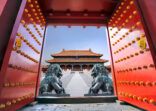With the new regulation, asset managers can set up an ultra-accredited investor mutual fund (UI fund), which can invest in any type of financial instruments and financial transactions, including high-risk products such as derivatives and short sales, without being subject to any investment limit, according to a statement from law firm Baker McKenzie.
The UI Fund can also borrow money or enter into a repurchase transaction (sell/buybacks) for up to 50% of the fund’s NAV, it added.
The UI fund is similar to the concept of hedge funds in other countries, it added.
The firm noted that the only applicable investment limit to the UI fund is the product limit on investment in deposits and deposit-like investments issued by certain financial institutions, which should not exceed 45% of the fund’s NAV.
Only Thai institutional and ultra-accredited investors are allowed to invest in the UI fund. An individual is considered an ultra-accredited investor if the investor or spouse has at least a net asset value of THB 70m ($2m excluding permanent residence), an annual income of at least THB10m (if not combined with spouse, at least THB7m), or direct investment in securities or derivatives of at least THB25m or THB50m including deposits.
Private funds approved
The SEC also relaxed the regulations for private funds. A private fund is a pooled fund collected from no more than 35 investors and managed by a licensed asset management company, according to information from SEC’s website.
Like the UI fund, these funds can now invest in high-risk products without being subject to any investment limit. However, they cannot borrow money or enter into any repo transaction, according to the statement.
According to the Baker McKenzie announcement, the new regulations came into effect on 1 March. However, the announcement does not say when asset managers can launch these funds.
The regulator is expected to create sales guidelines for the UI funds to avoid mis-selling to investors, according to Rui Ming Tay, Singapore-based senior analyst at research firm Cerulli Associates.
Based on the firm’s discussions with the SEC, Tay said that the regulator is pushing for the release of the new guidelines this month.
The regulator has been relaxing rules in Thai’s fund management industry. In January last year, a big regulatory change allowed qualified Thai investors to buy offshore funds directly from a broker or bank, avoiding the master feeder scheme, as reported. Before the change, foreign funds for sale in Thailand have been required to come in through a master feeder scheme.
Concern over returns
According to Tay, some asset managers in Thailand have started planning the launch of UI funds. But he believes it is unlikely to have any significant changes to investors’ asset allocation in the near term.
“Ultra high net worth investors are probably going to invest a small portion of their assets into such funds for diversification purposes only. The main concern is still the performance returns, and hedge funds haven’t been performing over the last few years,” he said, adding that demand for hedge funds has dropped across the region.
Globally, hedge funds saw outflows of around $110bn for the full year 2016, with both equity and fixed income hedge funds seeing the largest outflows in that asset class during the year, according to data from Evestment, as reported. In the region, Asia-domiciled funds saw net outflows of $6.72bn.
Besides fund flows, fund launches in Asia also decreased. According to Preqin data, 67 new hedge funds launched in 2016 and 139 in 2015. These numbers represent a continuous decline from an all-time high of 217 in 2014.
But the performance of hedge funds globally have improved. Last year, the hedge fund aggregate benchmark returned 5.65%, compared to 2015’s -0.71%, according to an Evestment report published this month.
Global hedge fund performance was also positive across almost all funds by primary strategy and regional exposure in 2016, compared to the negative returns in 2015, according to Evestment data.
Hedge fund returns


Source: Evestment

















